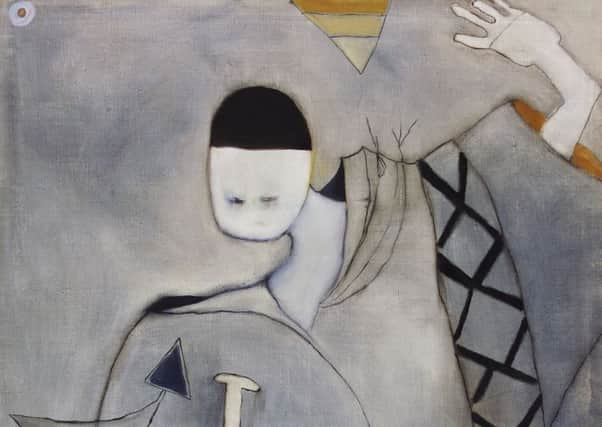Pat Douthwaite, a brilliant, troubled, uncompromising artist


It is now 14 years since Pat Douthwaite died alone of heart failure in bed and breakfast accommodation in Broughty Ferry. She was two days short of her 68th birthday. Her legacy is her extraordinary work: utterly original and arresting paintings and drawings which provoke a huge variety of responses and persist in the memory – and which, like all great artworks, transcend the times in which they were made.
Her work is not easily defined, however, at once naive and intellectually loaded, personal but resonating with cultural references. It was not made for others but came from that deep-seated need of the creative to make, to express. That said, she was not uninterested in what people thought, often drawing an audience into a dangerous dialogue; she was impossible to please and made enemies of her supporters with an impunity that was at once careless and pathetic.
Advertisement
Hide AdAdvertisement
Hide AdBut in front of her best work the artist seems still palpably present because she is the real subject of everything she made, in pain, anger or ecstasy. Even now cultural impresarios from both public and private parts of the art establishment who were attracted to her to begin with but found her impossible to deal with are wary of her aftermath, as if the work carries toxicity.
Douglas Hall, the first curator of the Scottish National Gallery of Modern Art and a long-suffering supporter, wrote in 2000: “I like to remember Douthwaite as a young woman full of mixed diffidence and hope, embarking on a voyage that was to come near to shipwreck many times. Those of us who came into contact with her, though we may often have had to suck our fingers, have some responsibility along with Douthwaite herself for the fact that she has not had proper recognition of her status as a painter of distinction.”
We can now easily think of her work as being affected by her bipolar mental illness, but we must be wary of letting this define her; she was not the eternal victim – she fought institutionalisation, and her work is far from the mad, curious outpourings of a patient. But the work is challenging. In the late fifties there is something owed to Bill Crozier, whom she met in Suffolk, in her restricted palette – red, black and white – and in the simplified landscape forms; to the two Roberts, Colquhoun and MacBryde, as well as the common influences of the School of Paris, Dubuffet in particular.
People quickly became her subject, at first the dandies and grotesques at once Carnaby Street chic and Soho damaged. They were replaced by archetypal women (none alive, because they would be her natural rivals). She chose western heroines, like Cattle Kate or the Scottish witch Isobel Goudie. An exhibition at the Scottish Gallery in 1977 was devoted to aviatrix Amy Johnson, and another show with the 369 Gallery for the Edinburgh International Festival in 1982 was entitled Worshipped Women and featured an introduction by Robert Graves, whom she knew well from her life in Majorca.
Her roll-call of single figures was not exclusively distaff: she painted and drew her husband, the graphic artist Paul Hogarth, her friend Lindsay Kemp and, demonstrating a keen if jaundiced interest in current events, she painted a disturbing series of works inspired by the Charles Manson trial.
Throughout her life she drew, prolifically and honestly, and her febrile, nervous line exemplified in her distinctive signature is instantly recognisable. She was a great traveller, devouring cultures as far afield as Poland, Peru, Mexico and India. In the last ten years of her life she seemed to be constantly on the move, her world by then restricted to the Borders and her homes always temporary. But still she worked, beginning a new love of watercolour which produced some of her most touching imagery, very often of animals – the receptacles of love she could not give to others.
There is often no happy ending in the life of the creative but Pat Douthwaite is present in her work and meeting her there is as rewarding and challenging as it was in her life.
• This is an edited extract from Pat Douthwaite by Guy Peploe (Sansom & Co, £25). Pat Douthwaite: The Outsider is at The Scottish Gallery, Edinburgh, 1-25 June, www.scottish-gallery.co.uk